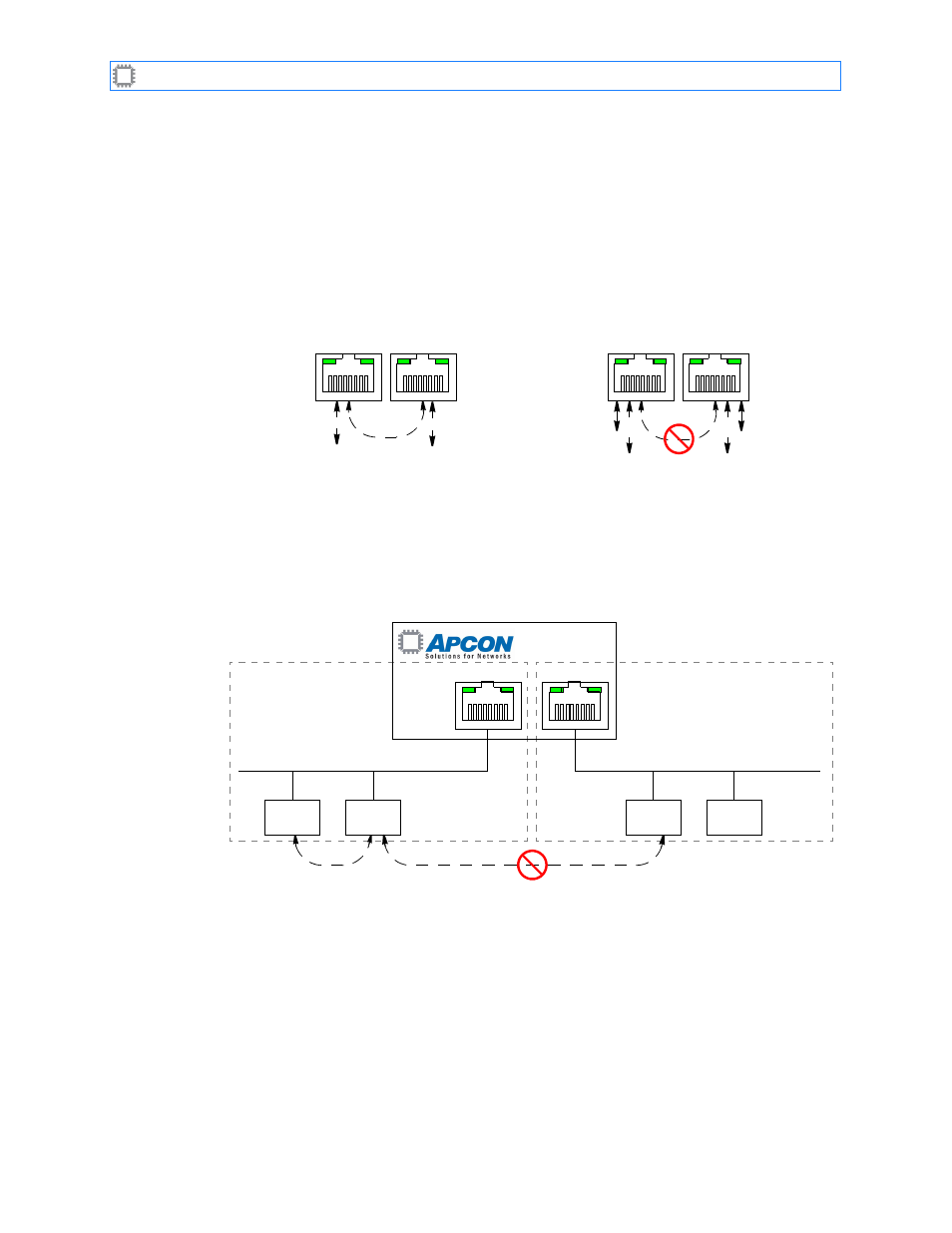Assigning ip addresses, Figure 3. single vs. multiple ip addresses – MultiDyne ACI-2058 User Manual
Page 49

Chapter 2: Introducing W
EB
X
A54-3000-100 A
10
A
PCON
, Inc.
2.5.
Assigning IP Addresses
When you specify only one IP address, that address is assigned to both ports and traffic
flows between the two ports. The ports act like a network switch and you can stack multiple
chassis together, plug one into the network, and daisy-chain the rest.
With two IP addresses, each LAN port is multihomed with the two IP addresses. This means
you can reach each port by either IP address. The two LAN ports on the back of the unit are
split into isolated VLAN segments and cannot pass traffic between each other. You cannot
daisy chain.
In the multiple IP address scenario, typically each address is a different subnet. Each LAN
port plugs into the network segment containing that particular subnet. (Since each port
listens for both IP addresses, it doesn’t matter which port gets plugged into which subnet.) In
theory, both IP addresses are available on both LAN ports but, in practice, each LAN port
uses only one address.
Figure 3. Single vs. multiple IP addresses
LAN 1
LAN 2
IP address A
IP address B
IP address A
IP address B
IP address A
IP address A
IP address A
LAN 1
LAN 2
Figure 4. Example: multiple IP addresses and subnets
LAN 1
LAN 2
10.2.n.n
10.2.n.n
10.2
10.1
10.1.n.n
10.1.n.n